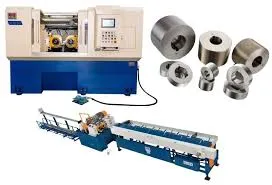
-
 Afrikaans
Afrikaans -
 Albanian
Albanian -
 Amharic
Amharic -
 Arabic
Arabic -
 Armenian
Armenian -
 Azerbaijani
Azerbaijani -
 Basque
Basque -
 Belarusian
Belarusian -
 Bengali
Bengali -
 Bosnian
Bosnian -
 Bulgarian
Bulgarian -
 Catalan
Catalan -
 Cebuano
Cebuano -
 Corsican
Corsican -
 Croatian
Croatian -
 Czech
Czech -
 Danish
Danish -
 Dutch
Dutch -
 English
English -
 Esperanto
Esperanto -
 Estonian
Estonian -
 Finnish
Finnish -
 French
French -
 Frisian
Frisian -
 Galician
Galician -
 Georgian
Georgian -
 German
German -
 Greek
Greek -
 Gujarati
Gujarati -
 Haitian Creole
Haitian Creole -
 hausa
hausa -
 hawaiian
hawaiian -
 Hebrew
Hebrew -
 Hindi
Hindi -
 Miao
Miao -
 Hungarian
Hungarian -
 Icelandic
Icelandic -
 igbo
igbo -
 Indonesian
Indonesian -
 irish
irish -
 Italian
Italian -
 Japanese
Japanese -
 Javanese
Javanese -
 Kannada
Kannada -
 kazakh
kazakh -
 Khmer
Khmer -
 Rwandese
Rwandese -
 Korean
Korean -
 Kurdish
Kurdish -
 Kyrgyz
Kyrgyz -
 Lao
Lao -
 Latin
Latin -
 Latvian
Latvian -
 Lithuanian
Lithuanian -
 Luxembourgish
Luxembourgish -
 Macedonian
Macedonian -
 Malgashi
Malgashi -
 Malay
Malay -
 Malayalam
Malayalam -
 Maltese
Maltese -
 Maori
Maori -
 Marathi
Marathi -
 Mongolian
Mongolian -
 Myanmar
Myanmar -
 Nepali
Nepali -
 Norwegian
Norwegian -
 Norwegian
Norwegian -
 Occitan
Occitan -
 Pashto
Pashto -
 Persian
Persian -
 Polish
Polish -
 Portuguese
Portuguese -
 Punjabi
Punjabi -
 Romanian
Romanian -
 Russian
Russian -
 Samoan
Samoan -
 Scottish Gaelic
Scottish Gaelic -
 Serbian
Serbian -
 Sesotho
Sesotho -
 Shona
Shona -
 Sindhi
Sindhi -
 Sinhala
Sinhala -
 Slovak
Slovak -
 Slovenian
Slovenian -
 Somali
Somali -
 Spanish
Spanish -
 Sundanese
Sundanese -
 Swahili
Swahili -
 Swedish
Swedish -
 Tagalog
Tagalog -
 Tajik
Tajik -
 Tamil
Tamil -
 Tatar
Tatar -
 Telugu
Telugu -
 Thai
Thai -
 Turkish
Turkish -
 Turkmen
Turkmen -
 Ukrainian
Ukrainian -
 Urdu
Urdu -
 Uighur
Uighur -
 Uzbek
Uzbek -
 Vietnamese
Vietnamese -
 Welsh
Welsh -
 Bantu
Bantu -
 Yiddish
Yiddish -
 Yoruba
Yoruba -
 Zulu
Zulu
Thread Rolling Machinery Maintenance and Support Solutions for Optimal Performance
Understanding Thread Rolling Equipment Service An Essential Guide
Thread rolling is a critical process in the manufacturing of threaded fasteners and components. This technique is preferred in many industries due to its ability to produce high-strength threads with superior surface finishes compared to conventional cutting methods. However, like any machinery, thread rolling equipment requires regular servicing and maintenance to ensure optimal performance and longevity.
Importance of Thread Rolling Equipment Service
Investing in thread rolling equipment is a significant expenditure for manufacturers. Consequently, ensuring that this equipment is maintained effectively is crucial for maximizing return on investment. Regular servicing extends the lifespan of the machines, reduces breakdowns, and maintains production efficiency. Furthermore, well-maintained equipment minimizes the risk of defects in production, ensuring that all threaded components meet quality standards and customer specifications.
Key Components of Thread Rolling Equipment Service
1. Routine Inspections Regular inspections should be conducted to identify any potential issues before they escalate into major problems. This includes checking for signs of wear and tear on critical components such as rolling dies, spindles, and hydraulic systems.
2. Lubrication Proper lubrication is essential to reduce friction and wear. Thread rolling machines typically involve multiple moving parts that require adequate lubrication to function efficiently. Using the right type of lubricant and ensuring that it is replenished regularly can prolong the life of the equipment.
3. Alignment and Calibration Over time, the alignment of thread rolling machines can drift, leading to inaccuracies in the thread rolling process. Routine service should include checks and adjustments to the machine's alignment and calibration, ensuring that the threaded components produced are consistent and meet required specifications.
thread rolling equipment service

4. Die Maintenance The dies used in thread rolling are critical components that determine the quality of the threads produced. Regular inspection, cleaning, and replacing worn dies are necessary to ensure that the tools function effectively. It's often beneficial to keep a set of spare dies for quick replacements during service intervals.
5. Hydraulic System Checks Many thread rolling machines rely on hydraulic systems for operation. Regular checks on hydraulic fluid levels, pressure, and the integrity of hoses and seals can prevent leaks and ensure reliable machine operation. Neglecting these aspects can lead to sudden mechanical failures.
Troubleshooting Common Issues
Despite regular maintenance, issues may arise. Common problems include irregular thread profiles, machine stalls, and excessive vibration. Troubleshooting these problems often involves
- Examining Roller Alignment Misalignment can cause variations in thread dimensions. Adjusting the alignment can rectify this issue. - Checking Gear Systems Worn gears can lead to inconsistent performance and should be replaced as necessary.
- Monitoring Temperature Excessive heat can indicate friction problems or overstressed components. Cooling systems should be checked to maintain optimal operating temperatures.
Conclusion
Thread rolling equipment service is an integral part of maintaining production efficiency and product quality in threaded component manufacturing. By implementing routine maintenance practices and addressing potential issues proactively, manufacturers can ensure that their thread rolling machines operate smoothly and reliably. Investing time and resources in proper equipment service ultimately leads to reduced downtime, lower operational costs, and enhanced product quality. In the competitive landscape of manufacturing, effective thread rolling equipment service stands out as a vital strategy for long-term success.
